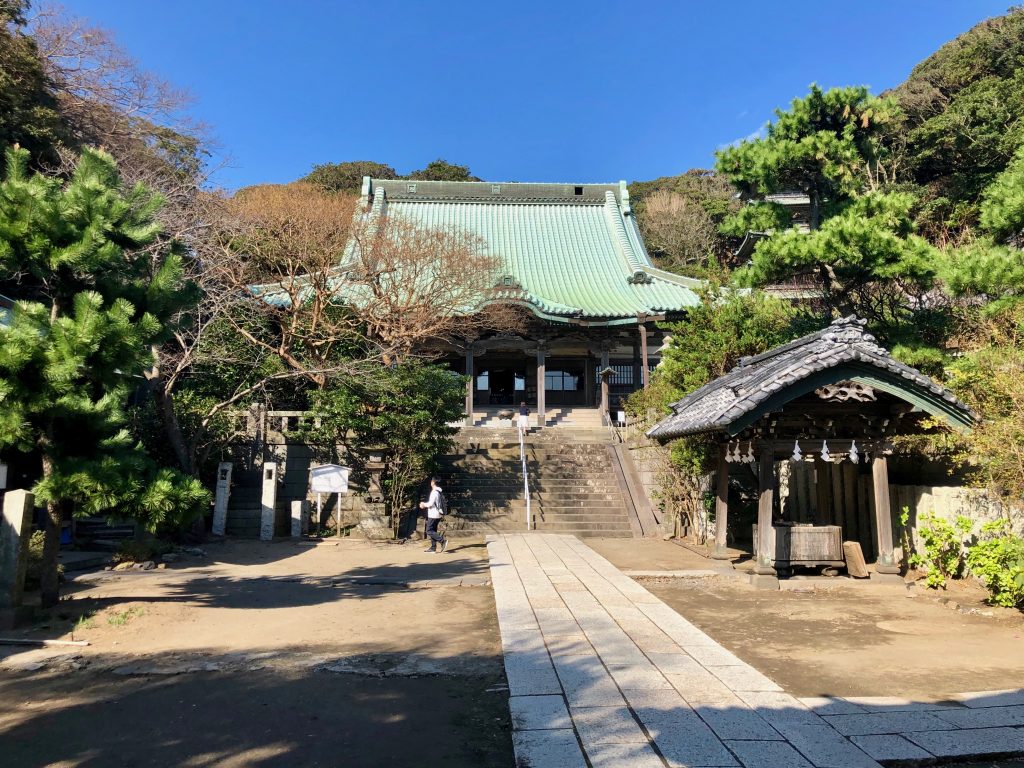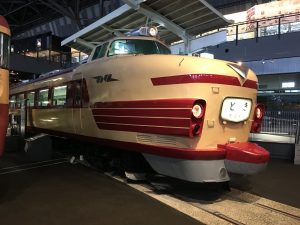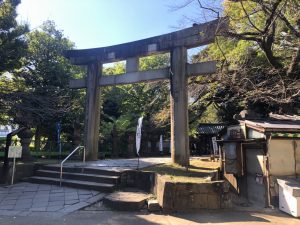Enoshima
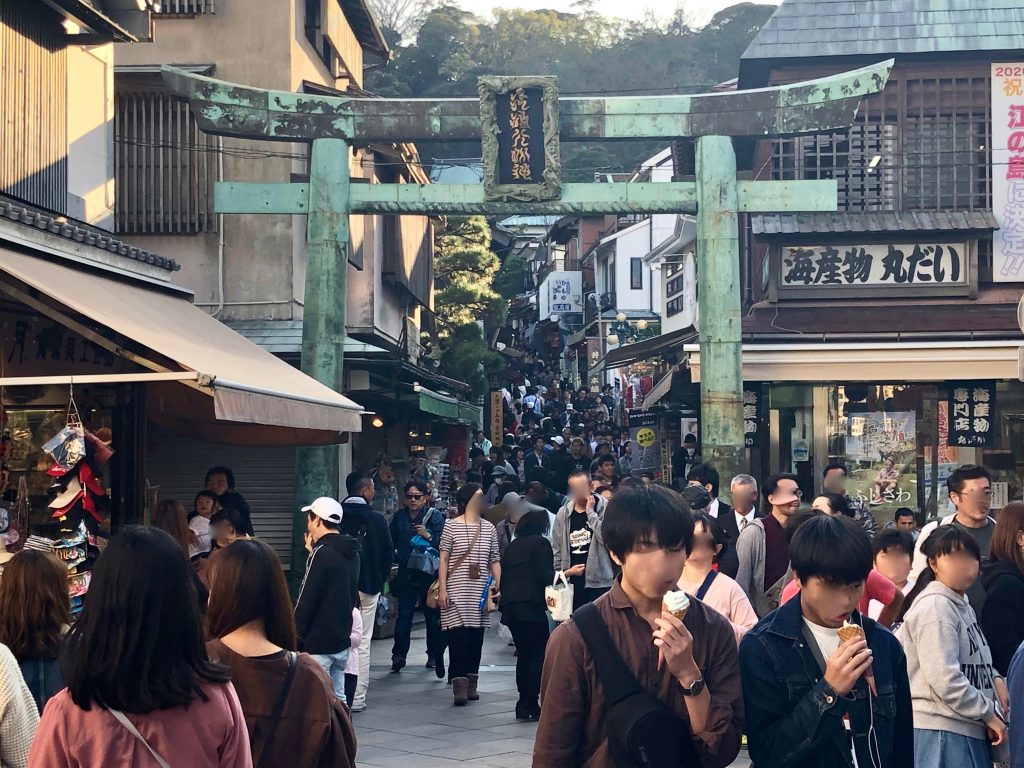
Enoshima is a popular summer tourist spot that is very reminiscent of some of the southern coastal towns of the UK such as Brighton or Bournemouth, with lines of apartments overlooking the sea and a very basic town catering heavy to and brimming to capacity with tourists when it’s hot, but deserted once winter comes.
While mostly a Japanese tourist spot, there are a number of foreigner tourists that happen down that way especially during the summer. The very popular Kamakura is a short train ride away and a combined ticket can be purchased that will allow you to visit both over one or two days. See later for details are there are two competing plans due to Japanese numerous private fail companies.
The main attractions are centered around the island a few hundred meters off the shore, connected by a bridge. The coast line around this island is quite spectacular and can be accessed even at high tide (if you ignore the warning signs – which everyone does). You can access the area in the picture below by walking to this point and following the other people.
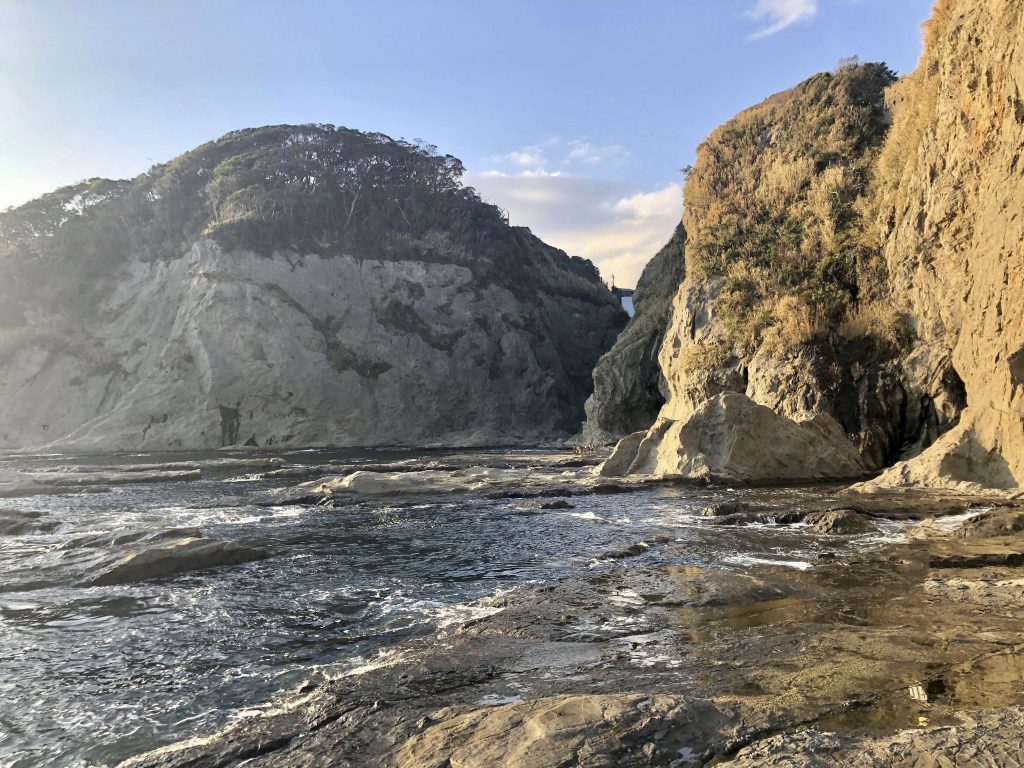
The Iwaya Caves are located on the far side of the island can can be access on foot through the main island garden and shrine complex.
Notice of partial closure of caves
Due to typhoon damage the opening of the caves is intermittent to allow restoration works. Check out the Facebook page here for latest information. The main tourist sites don’t seem to update with this information in English.
Nearby is a famous temple, Ryukoji, which is the site of the attempted execution of the Buddhist sect founder, Nichiren, before he was exiled to Sado Island.
Getting to Enoshima and rail passes
There are two options for travel to and around the Enoshima area, depending on which mainline you travel to the area from Tokyo to the north or Odawara in the west. The map below gives a good overview with the two options being the JR line from Tokyo to Kamakura, or the Odakyuu line from Shinjuku to Fujisawa.
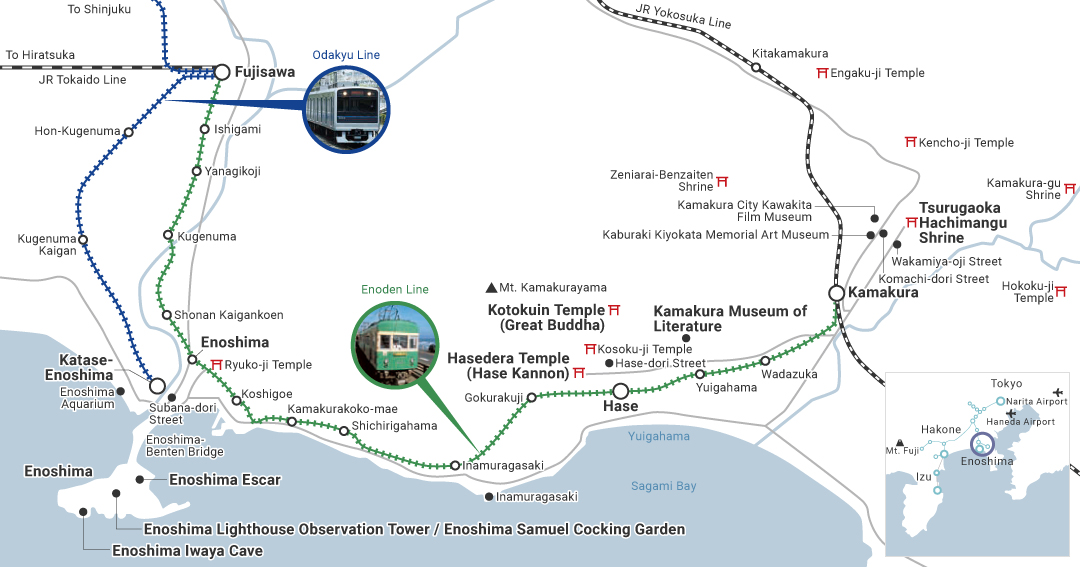
If you have a JR pass then the JR route will be the best option. You can supplement the free travel to Kamakura with a day-pass that gives you unlimited travel along the Enoden line (green) and the Shounan Monorail (not shown), but not the Odakyu line (blue). Check out the official site and buy a ticket from Ofuna, Fujisawa, Kamakura or Kita-Kamakura Stations.
You can also by the Enoden line pass for 650yen, but it doesn’t seem worth it as the JR version is only 60 yen more and covers the monorail.
There is also a pass for entry to the 4 most popular attractions on the island itself and saves you a whopping 360yen per adult. If you plan on doing all 4 then by all means this pass will save you money.
The other option is a pass that covered the journey on the Odakyu Line from Shinjuku. This pass will get you travel to Kamakura via Fujisawa and Enoshima. You can buy at the ticket center in Shinjuku station. Bare in mind that it is a day pass and travel to Kamakura from Fujisawa via the Enoshima will take 30 minutes. You probably won’t have a lot of time to wander about Kamakura as well as Enoshima in one day. There are plenty of other passes available if you want to spread the trip out a bit, with the Hakone-Kamakura pass over three days being the best bet.
A good overview of all the pass can be found here. This is what you get then there are three train companies all serving the same area.
Fujisawa itself is not worth visiting, so “When Japan” would always recommend the JR route via Kamakura directly. Fujisawa is mostly a residential town with a lot of shrines and temples. The two hosts a large festival towards the end of September however it isn’t anything a foreign tourist would spend extra effort to go see. If you want to see what a typical Japanese festival is like, you couldn’t find a more typical example.
